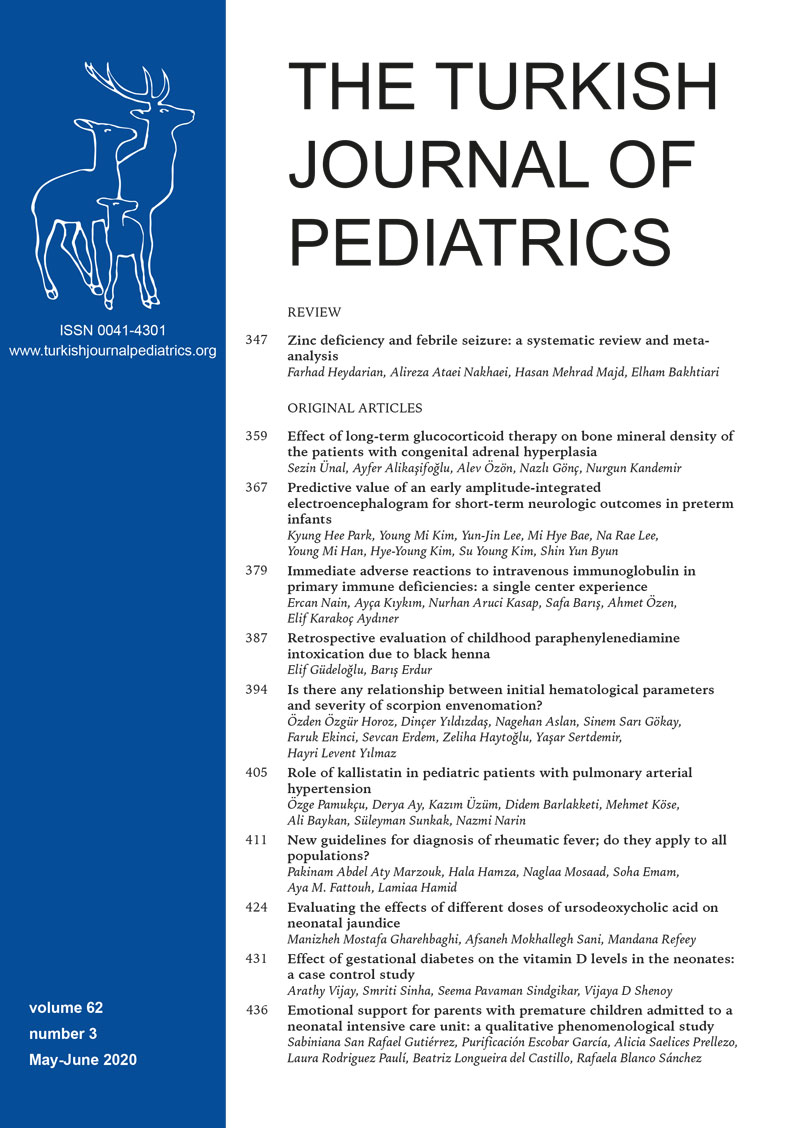Abstract
Background. Myalgia is one of the presenting symptoms of Familial Mediterranean Fever (FMF), which is reported at a rate of 27-39.6%. Recurrent fasciitis in those cases are extremely rare. We aimed to present a case with FMF having radiologically proven fasciitis.
Case. An 11-year-old male patient with a diagnosis of FMF and M694V homozygote mutation, using colchicine regularly at a dose of 2 mg/day (0.08 mg/kg/day) for 4 years; was admitted to the hospital with severe pain and tenderness on the right calf. There were no accompanying symptoms like fever or abdominal pain. He described three similar episodes with pain and tenderness in left and right calves, which were not accompanied by fever in the last 6 months. The erythrocyte sedimentation rate and C-reactive protein levels were high and serum creatinine kinase was normal. The day after initiation of non-steroidal anti-inflammatory drug (NSAID), his complaints regressed. However, after a week, he again had a severe calf pain. Lower extremity arterial and venous doppler ultrasonography was normal. Increased peripheral signal intensity and fasciitis around the soleus muscle was defined in MRI. With NSAIDs, myalgia disappeared in a few days and acute phase reactants decreased within a week. In the follow up, canakinumab was prescribed due to febrile attacks as frequent as once a month and calf pain observed almost weekly. Thereafter, both febrile attacks and recurrent debilitating calf pain were completely ceased.
Conclusion. There are three cases in the literature with fasciitis related myalgia. With this case, we wanted to emphasize fasciitis as a cause of FMF associated myalgia on MRI. In such cases MRI may be helpful to demonstrate fascial involvement.
Keywords: Familial Mediaterranean Fever, fasciitis
Copyright and license
Copyright © 2020 The Author(s). This is an open access article distributed under the Creative Commons Attribution License (CC BY), which permits unrestricted use, distribution, and reproduction in any medium or format, provided the original work is properly cited.














